|
|
|
|
|
|
|
|
|
ATV Equipment Construction & Modification |
|
 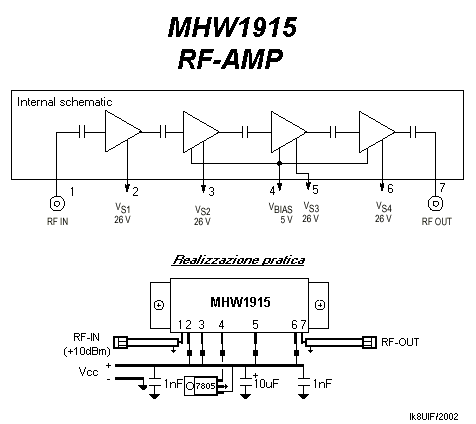 
THE MODIFICATION The first part of the operation is to take the module apart. You should have already removed the module from its original circuit. The module's blue cover is glued on each corner. The cover is removed using brute force. A screwdriver under one of the corners of the plastic corners and some leverage is all that is required to pop the case off the module. BEWARE there are TINY components inside the module that are easily destroyed so be careful. The transistors on the interior of the module are unprotected from physical damaged once you have removed the cover and are easily damaged so beware. MODULE INTERIOR WITH COVER REMOVED 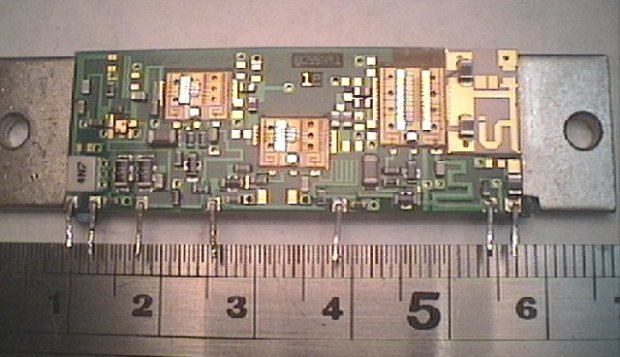 Step 1 Remove the input capacitor marked 4N7 Step 2Place chip capacitors on empty pads as shown in Yellow boxes in photo's below. Step 3Place chip capacitors shown in Red boxes in photo's below in parallel with existing components. Step 4The capacitor marked 2p7 in the yellow box placed on the right side of the module should be an ATC type due to the high temperatures that may develop inside the module. Step 5The Green lines in the photo's below show points on the output strip line that must be connected. Step 6Replace the blue cover and secure with a small amount of glue on the edge. Step 7Once the modifications are complete the module is ready for use. A practical implementation is shown at the top of this page. MODULE INTERIOR LEFT SIDE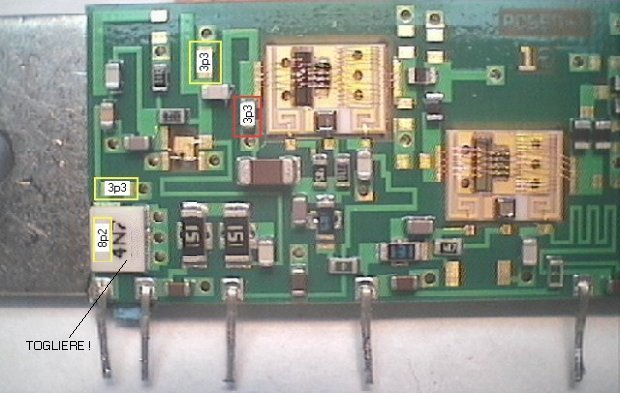 MODULE INTERIOR LEFT SIDE 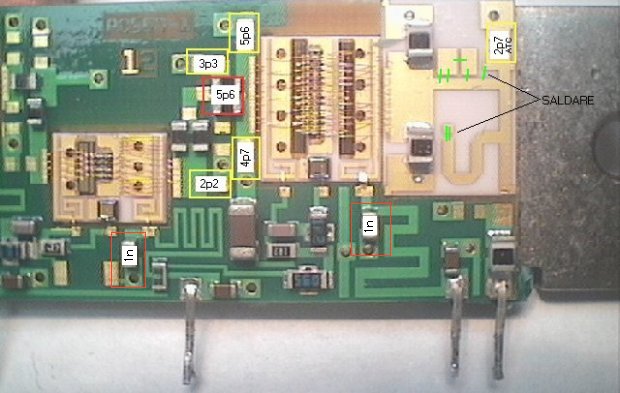 PRACTICAL IMPLEMENTATION OF FINISHED PRODUCT 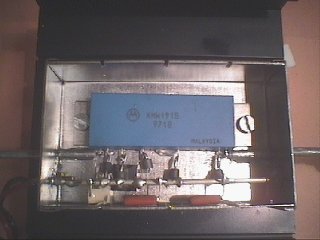 For the practical implementation the module should be bolted into a metal box with heat transfer compound to maximise heat transfer. The box will need a heat sink on the exterior. In this implementation by the author the input and output are fed by UT141 semi rigid coax with SMA connectors. The interior has a 5V regulator ( 7805 or similar ) to supply the bias voltage to pin 4 of the module. Pins 2,3,4,5,6 should have a ferrite bead on each leg next to the module. The power supply should enter the box via a feed through capacitor with liberal use on 1nf ceramic or chip capacitors on the supply line near the module. TESTING Use a 13.8V supply initially for testing. Use an input signal of approximately 10dbm ( 10mW ) and a maximum of 17dbm ( 50mW ) at 1240MHz. The output should be 5W - 7W if all is well. A supply of up to 24V can be used with an increase in output power to approximately 15W - 20W. Shown below are test results from the author ( Module fed with supply of 13.8V )
The amplifier can be used on the entire 23cm band as demonstrated above. 73s de Ik8UIF Alberto |